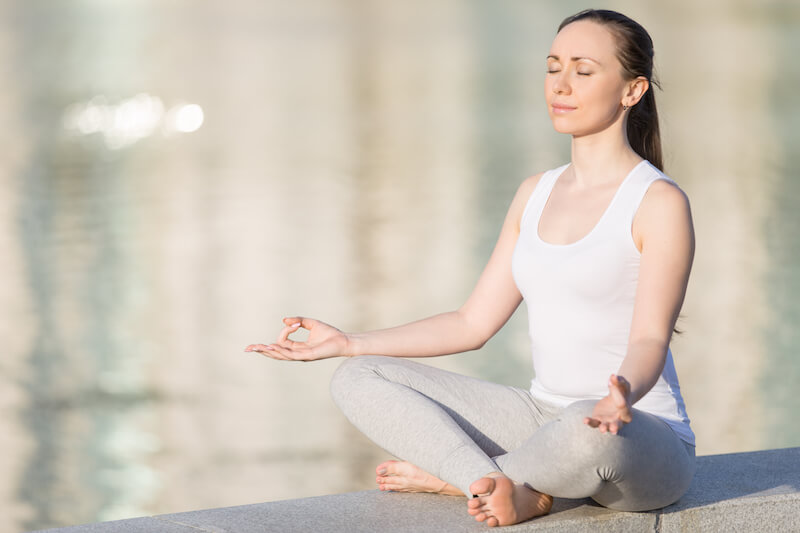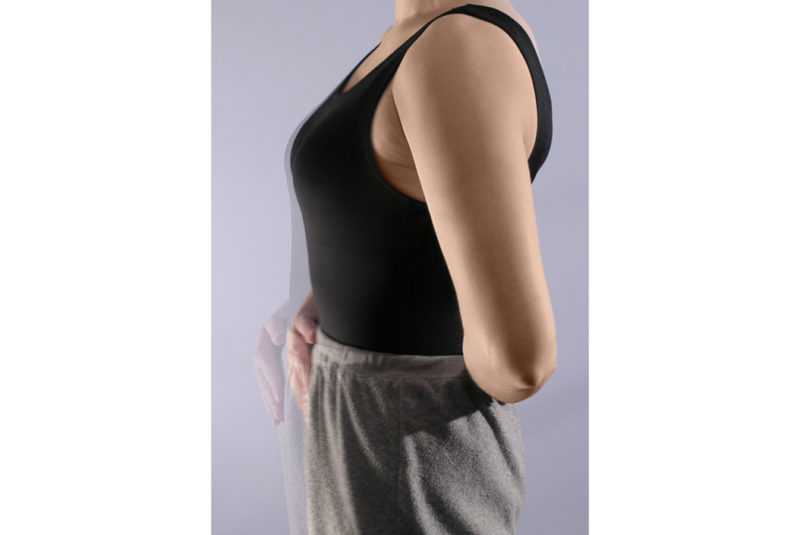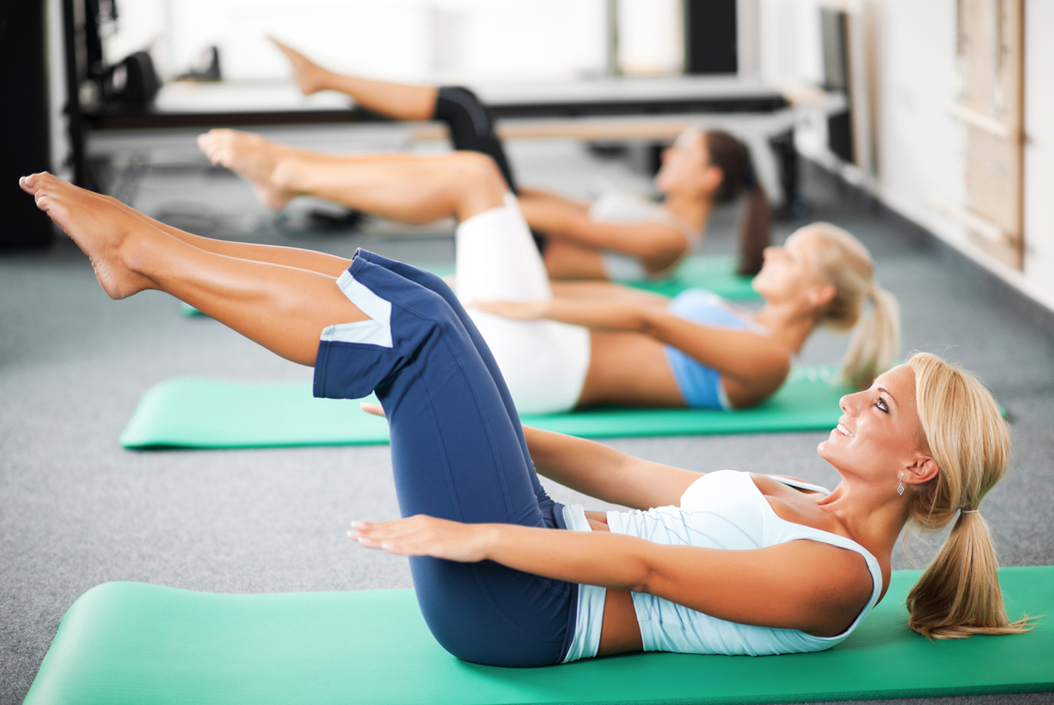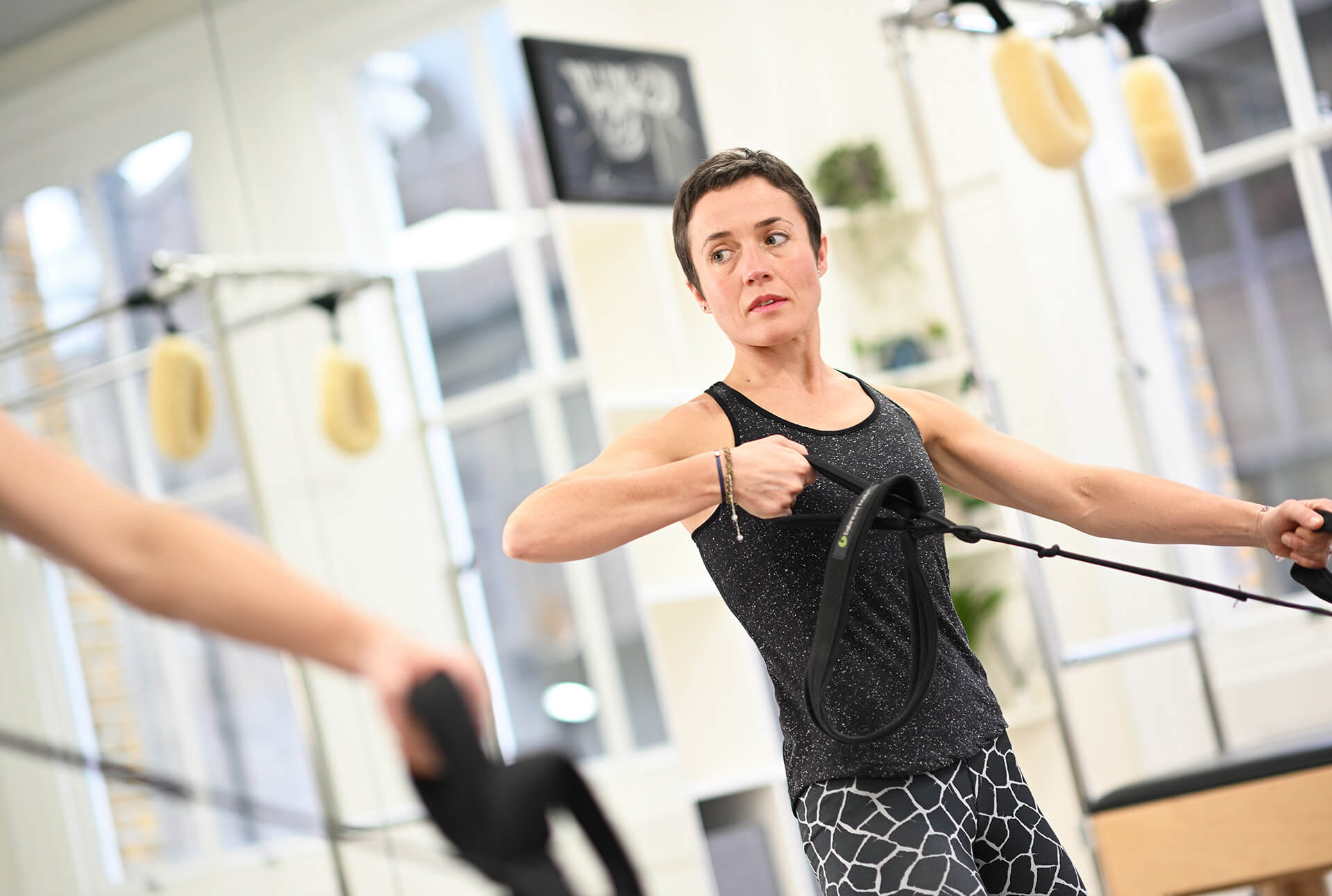Breathing is the first of the 6 Pilates principles and one of the most important aspects of the method to master.
In Pilates, we mostly use posterior-lateral breathing to facilitate or challenge movement. Breathing in this way during a Pilates class also helps to cleanse the body, improve circulation and encourage relaxation (although that can depend on the exercise!).
Unlike other forms of exercise, however, Pilates doesn’t always require you to inhale or exhale in a certain way or at specific times.
Instead, in Pilates, we encourage you to match the intensity and pattern of your breath to the exercise you are performing. For example, if the movement is designed to be restorative then relaxed, natural breathing would be appropriate. If the exercise is more energetic, like the hundred, then you would want to use a more vigorous breathing style.
Why is it important to breathe properly in Pilates?
How you breathe can change your experience of an exercise. During the roll up, for example, if you hold your breath you hinder the mobility of your spine by creating too much intra-abdominal pressure.
In contrast, breathing in the right way at the right times during the roll up encourages the spine to move freely, making this exercise much more achievable.
This means that, if you want to get the most from your Pilates classes, you’ll need to learn how to breathe in Pilates. To find out how, read on.
How To Breathe In Pilates:
A healthy breath takes place in three dimensions: it involves expansion of the body forward and back, sideways, as well as upwards and downwards.
Unfortunately, many of us are used to holding out stomachs in and breathing mainly in our chests. This is called shallow breathing and it creates tension and restricts movement.
This is why learning posterior-lateral breathing is so important – it teaches us how to breathe in an optimal way where the ribcage moves all three planes and the abdomen expands a little. Breathing in this way can improve mobility of the spine, reduce stress and boost digestion.

Posterior-Lateral Breathing – the exercise:
The Set Up: You can do this exercise lying on your back with your knees bent or while seated.
Bring one hand to rest on your belly, the other can reach round to touch your back. This will help you feel your breath expanding the abdominal wall.
You can also experiment with placing your hands on your ribs. In this way, you can feel if your ribs move laterally as you breathe.
- Your shoulders should stay down while you breathe. Keep them relaxed and away from your ears during the exercise.
- Your spine should also be in neutral spine position. This is where all the natural curves of the spine are present.
- To start the exercise: breathe in slowly through your nose. Let the air flow into your chest. Allow the ribs to expand in front, back, sides as they fill with air.
- Relax your stomach and allow your lower belly to expand a little.
- Then, through an open mouth, exhale and allow your ribs to come back inwards towards your spine. Don’t force the air out – simply relax and allow the air to flow out.
- Repeat: Do this diaphragmatic breathing exercise a few times.

Top tips
- Keep your shoulders relaxed as you breathe and watch for them rising on the inhale. You want your shoulders to stay down throughout.
- Similarly, you want the inhale to occur evenly through the entire ribcage and in all directions. So, keep length through the top of your head at all times and watch that your spine position doesn’t change when you inhale.
- A restricted throat creates tension in the body, which can limit movement. So, practise breathing out with an open mouth and relaxed throat. Sighing the air out can help.
Education is key:
These blogs are designed to give information to everyone, however, it is important to remember that everyone is different! If you have not seen one of our therapists and have any questions about injuries, what you have read or whether this may be useful to you, please just ask. We are more than happy to help anyone and point you in the right direction. Our biggest belief is that education is key. The more you understand about your injury, illness and movement, the more you are likely to improve.




